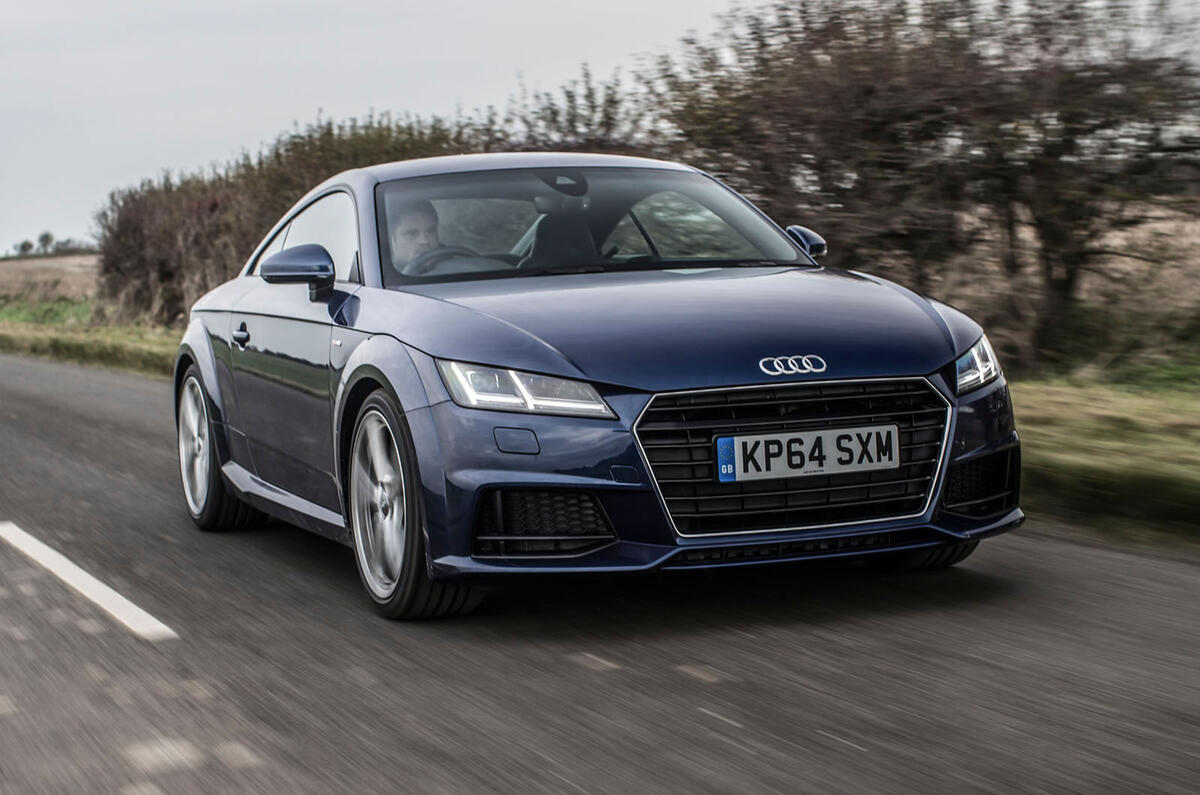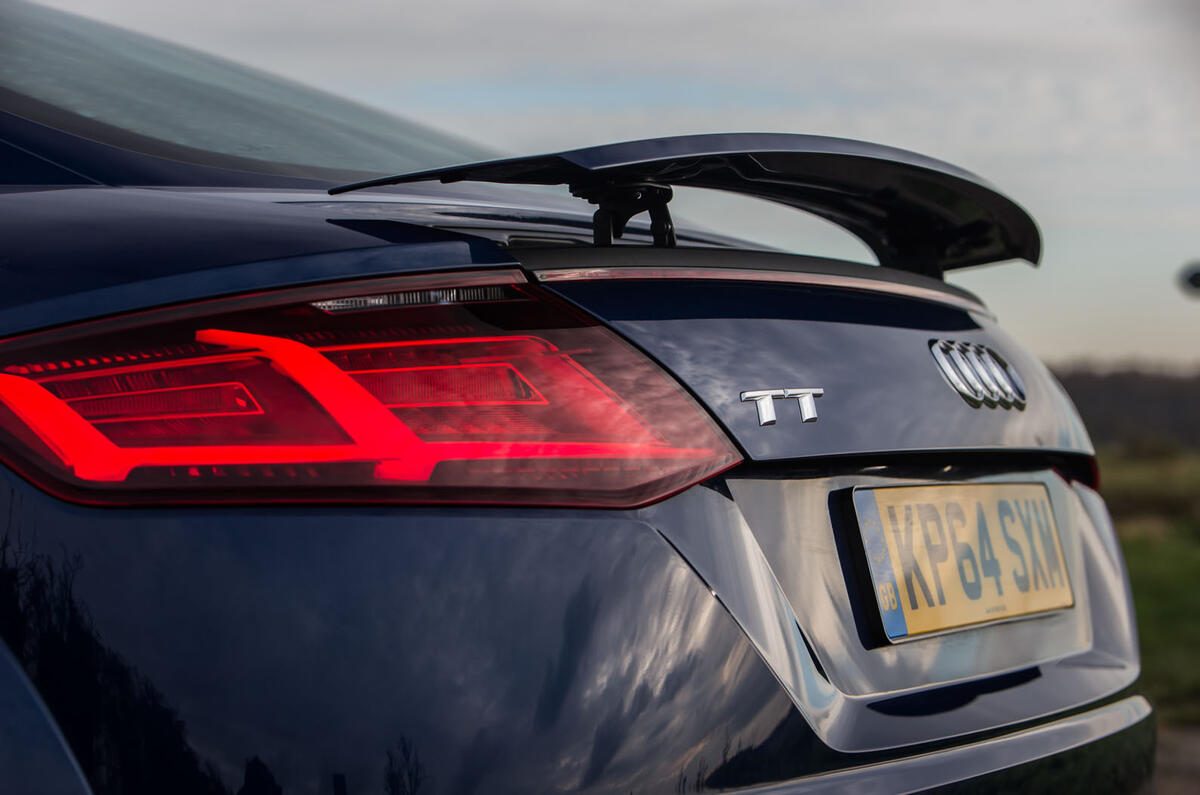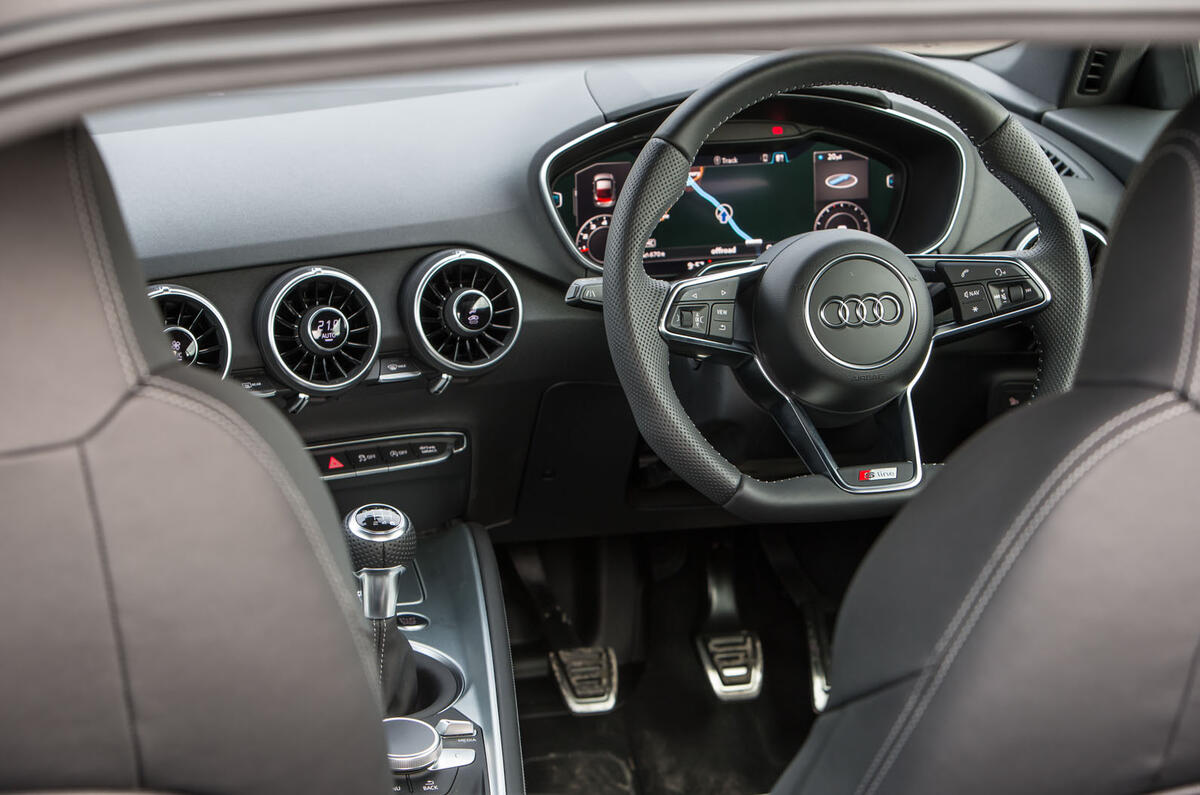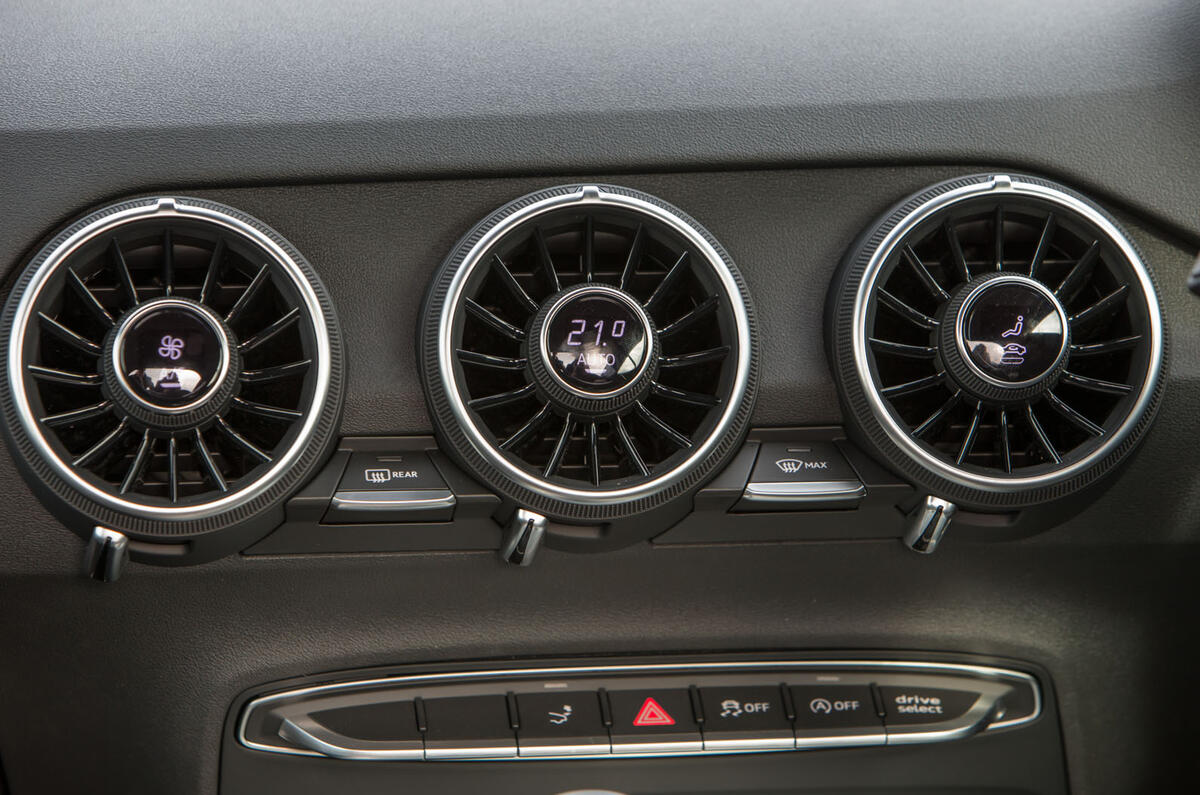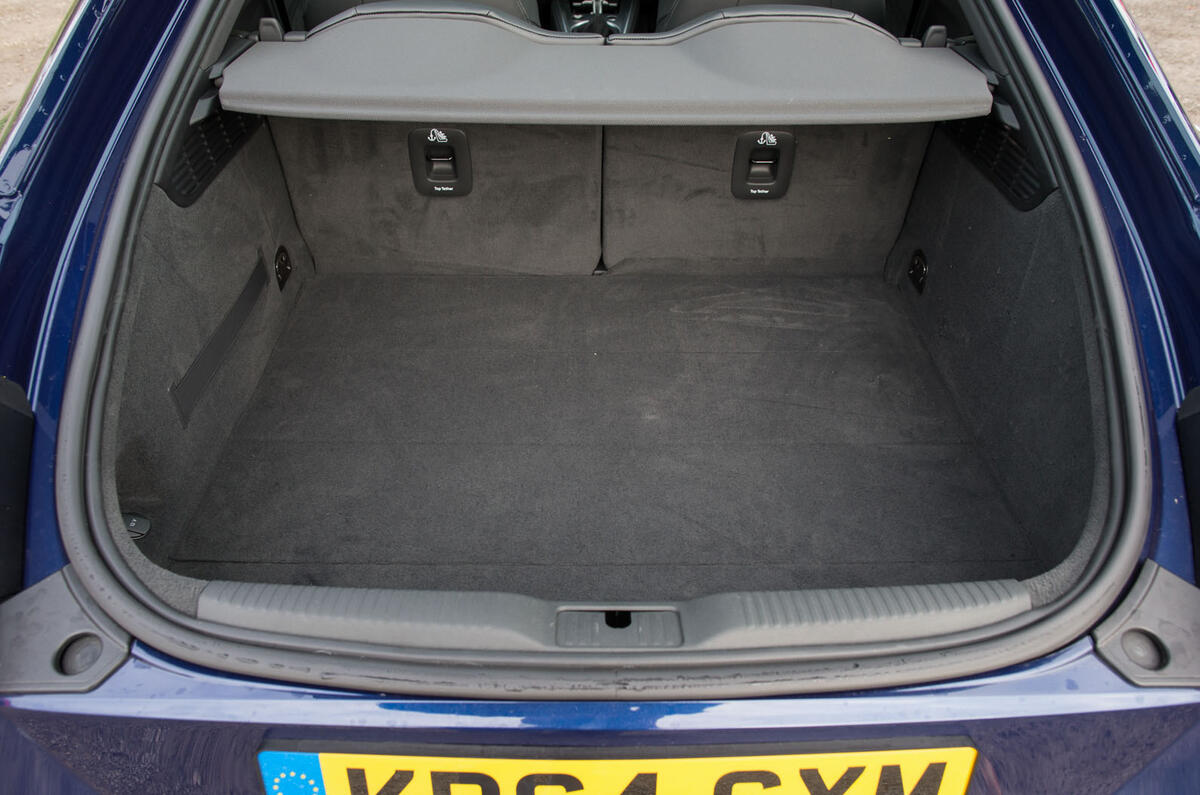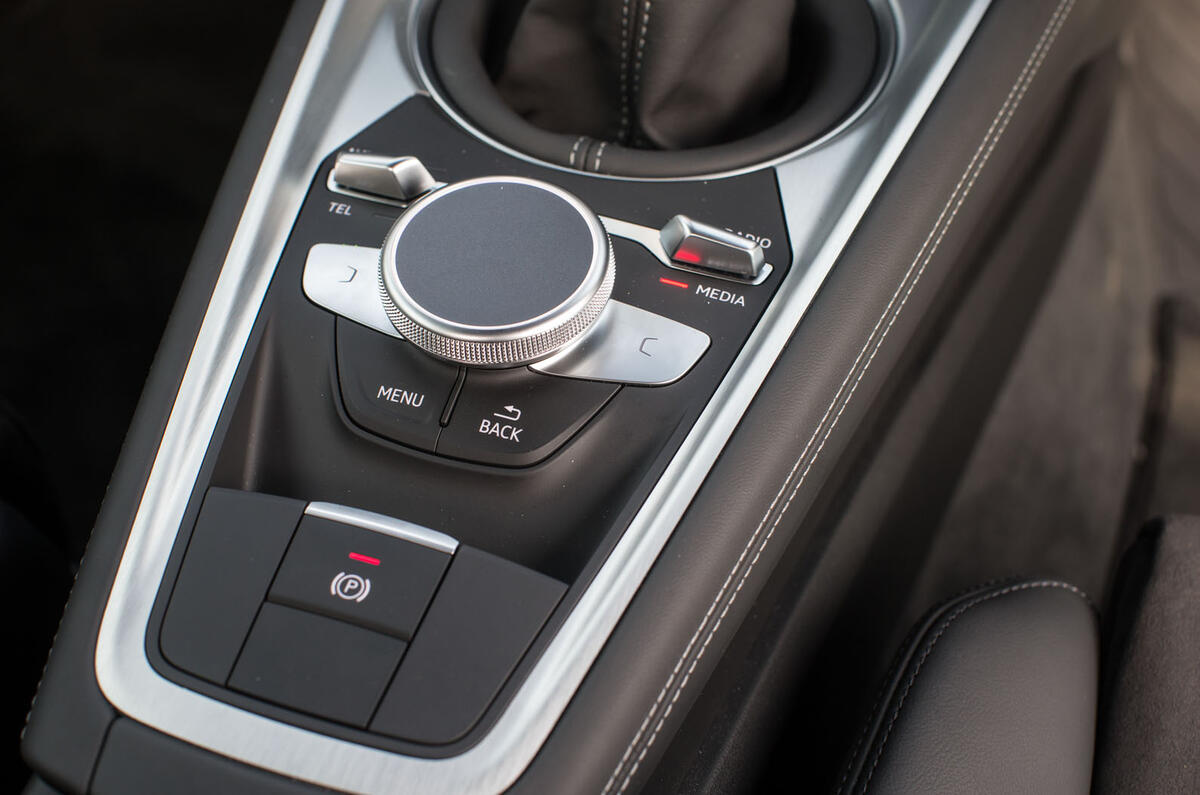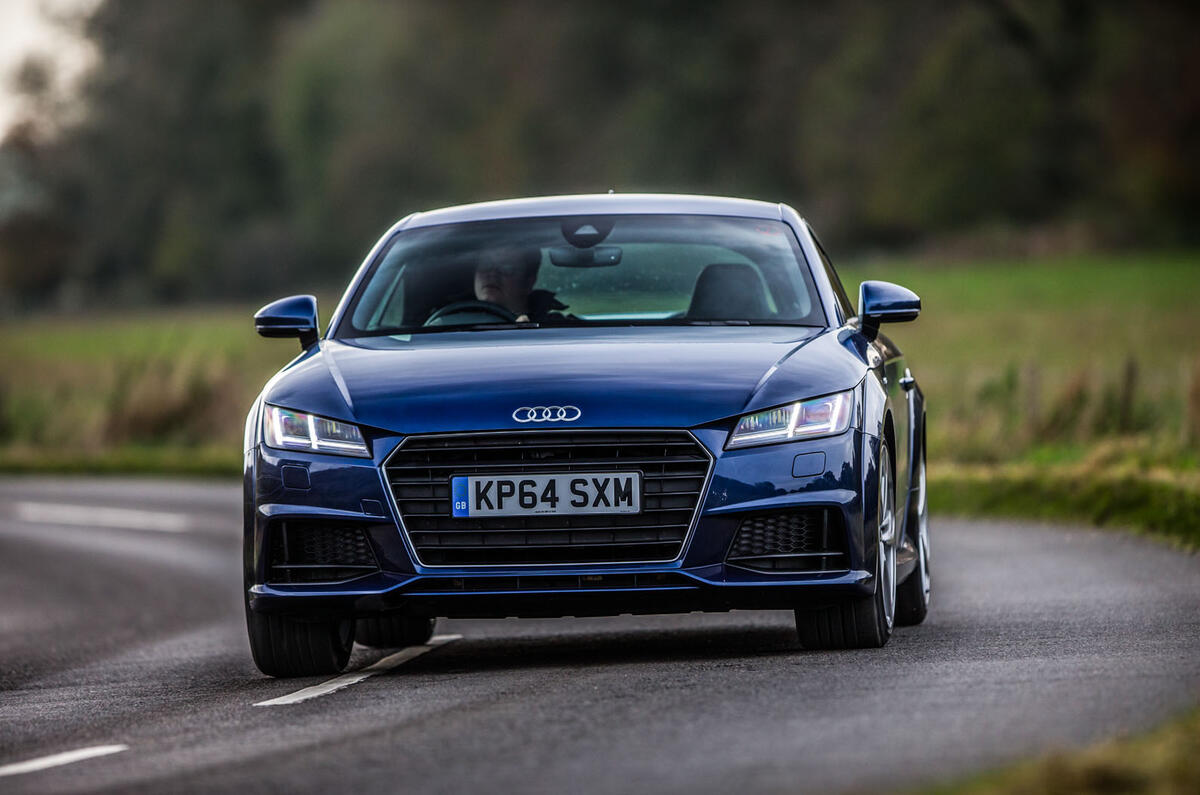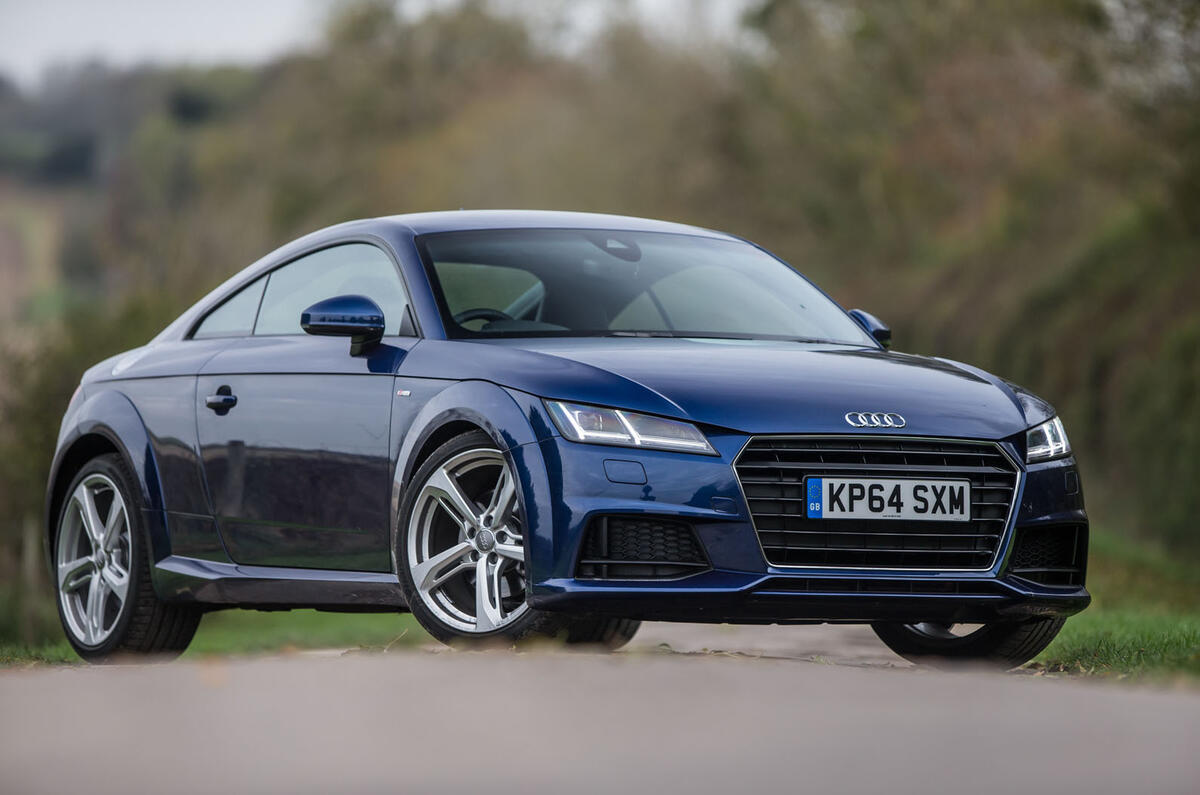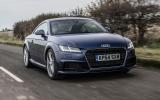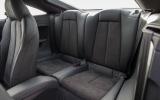Striking in its compactness, the TT is 50mm shorter than a BMW Z4 and 200mm shorter than a Porsche Cayman. And yet its occasional back seats and hatchback rear end add usability where you least expect it.
The car’s wheelbase now surpasses 2.5 metres and its boot 300 litres - it now offers 316 litres, in fact - but it’s the practicality added by the car’s hatchback and its split folding back seats that continues to set it apart.
The rear chairs are big enough for smaller adults on short hops, but you’ll make use of the space back there much more often on everyday errands that other low-slung coupés simply wouldn’t handle as easily.
Two trim levels are available - the entry-level Sport trim and S line. In Sport guise, the TT gets Alcantara and leather seats, Bluetooth, a USB socket, DAB radio, air conditioning, xenon headlights, keyless go, the retractable rear spoiler, 18in alloy wheels and Audi's 12.3in Virtual Cockpit display. S line trim adds 19in alloy wheels, more aggressive body styling, lowered and passive sports suspension, automatic LED lights and rain-sensing wipers.
Fancy a TTS, then the equipment list increases further with 19in alloys, Audi's adaptive suspension, Nappa leather covered sport seats, a nine-speaker Audi sound system and lane assist.
Practicality isn’t the big news inside, however. Instead you’ll find the headline act sited dead ahead as you settle into the lower-mounted sports seat: a 12.3in liquid crystal colour screen inside a driver’s binnacle that not only houses the usual instruments but is also the car’s only display for its multimedia, communication and navigation systems.


